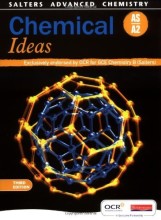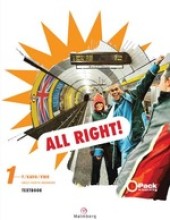Colour by Design - Arenes
13 important questions on Colour by Design - Arenes
What does benzene look like? Is it saturated or unsaturated?
A colourless liquid - very unsaturated
What is the molecular formula of benzene? What can be said about its shape and bond angles?
C6H6
A flat hexagonal structure (planar)
120 degrees
Why is the old structure of benzene (with three double bonds) no longer seen as correct?
- benzene does not undergo electrophilic addition reactions
- x-ray diffraction measurements show that the c-c bond lengths are equal (greater length than a double bond but less than a single bond)
- Higher grades + faster learning
- Never study anything twice
- 100% sure, 100% understanding
What makes benzene so stable?
The cyclic delocalisation of electrons - electrons repel each other, so a system in which they are delocalised and as far apart from one another as possible will involve minimum repulsion = stabilised
(this arrangement is much more stable than an alternate single/double bond arrangement)
What does the stability of the benzene ring mean in the type of reactions it undergoes?
It tends to undergo reactions in which the stable ring is preserved - reactions which disrupt the delocalisied electron system are less favourable and need higher temps and more vigorous conditions = it undergoes substitution reactions
What chemical test could be used to distinguish between 1,3,5-trimethylbenzene and phenylethene?
Does benzene decolourise bromine solution?
nooooooo
What is a phenyl group? What is the molecular formula of phenyl?
A benzene ring in which one hydrogen atom has been substituted by another group.
C6H5
How many electrons are delocalisied in (a) benzene and (b) naphthalene?
(a) 6
(b) 10
Why can't a molecule containing arene rings not easily be hydrogenated?
All the double bonds are present in the arene rings and so will not be able to react easily. (pp june 2010 Q5(c))
Name two types of commercially important material whose manufacture involves the nitration of benzene.
- Dyes
- Explosives
How does a halogen carrier (e.g. AlCl3) allow the reaction between benzene and chlorine to take place?
It can form a dipole with the chlorine gas to form Cl+
Compare the different reactivities of benzene and alkenes towards chlorine.
In benzene the electrons are delocalised/ spread out. In alkenes electrons are concentrated between two carbons - electrophiles are attracted more to greater electron density in alkenes.
The question on the page originate from the summary of the following study material:
- A unique study and practice tool
- Never study anything twice again
- Get the grades you hope for
- 100% sure, 100% understanding
































